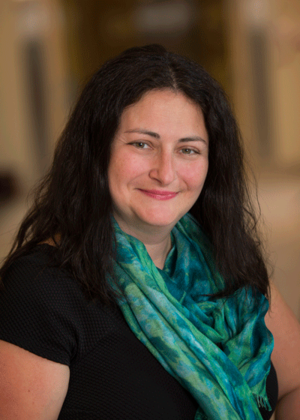Takeaway
When I have trouble bringing my focus back to the patient, I remind myself that this patient was once a baby that someone held as I have held my own babies.

Connecting with Patients | September 13, 2018 | 2 min read
By Ayelet Kuper, MD, University of Toronto
I spend many hours every day thinking, writing, and meeting about care. Compassionate care. Equitable care. Person-centered care. Diverse providers of care. Care for diverse populations. How to teach compassionate care. How to teach social justice-oriented care. Whether curriculum can promote reflexive care. How to get faculty members to prioritize person-centered care. How to get healthcare institutions to focus on equitable care. What the links are between all of these kinds of care conceptually, rhetorically, ontologically, discursively, practically… I’m getting dizzy just thinking about it all!
Getting to the core of care
One of my strategies when I am confronted with this much academic chaos is to imagine explaining the core of the issues with which I’m wrestling to a student or a layperson, and I keep coming back to something I have been saying for the past few years whenever I start working with a new group of medical students and residents on the Internal Medicine wards.After we introduce ourselves, I always begin by reminding students and residents that many of the patients we’ll be looking after together for the next two weeks are not only sick – they’re also old and chronically unwell, and by some physicians’ standards their diseases might not be considered “interesting” or “sexy.” Theirs are not the images used to inspire the public to run or bike or donate; nobody is having galas for the diseases they have and they don’t fit into hospital priority programs. And yet, they are our patients. We have to care about them and care for them as though they are the most important highest-priority patients in the hospital – because they are, because every patient should be, and because we are their physicians.
This patient was once a beloved baby
And then I tell them my trick: that when I have trouble bringing my focus back to the patient, to looking past their delirious shouts or their soiled diaper or their wizened body, I remind myself that this patient was once a baby that someone held as I have held my own babies, that someone hugged and snuggled and kissed on the nose and thought was the most perfect, wonderful creature in the world (and what a heartbreaking thing it would be if it turns out that nobody had ever held them like that). I remind myself that someone (in my world, usually a spouse or a child or even a grandchild) may still love them that much – and that even if they have nobody left in the world, I need to treat them as people still deserving of that sort of love.I’m always sheepish about saying all this, because it seems so at odds with the medical culture in which I trained. And it’s often clear that some of the trainees are trying not to show that they think I’ve lost it entirely. But usually there is at least one student or resident who meets my eyes, smiles, and maybe even exhales deeply – and I know they’ve understood.
Please note this thoughtful posting originally appeared on the AMS Healthcare blog.
CLOSLER would like to thank both the author and AMS Healthcare for allowing us to share this beautiful piece. Our executive editor, Scott Wright, was lucky enough to hear the author speak in person this summer at the AMEE Conference. Thank you all for sharing!

